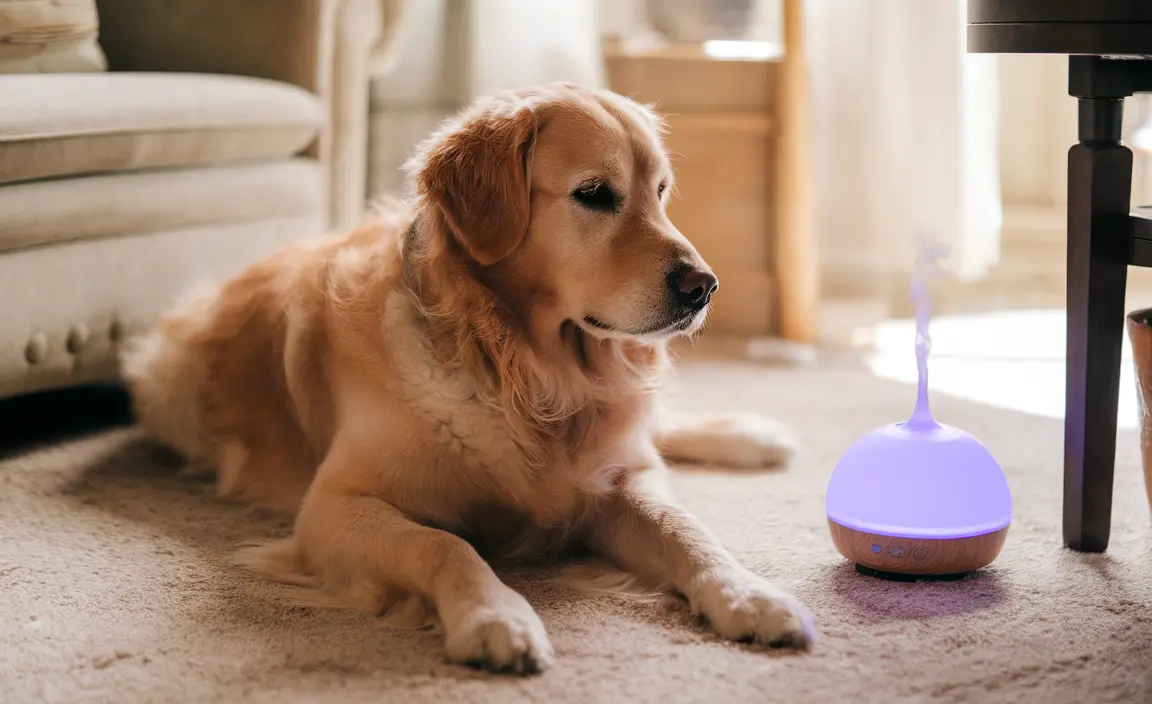As pet owners, we're always seeking ways to create a healthy, comfortable environment for our furry friends. However, when it comes to essential oils, what seems relaxing to us can pose serious risks to our canine companions. Understanding the potential dangers and safe practices of essential oil use around dogs is crucial for responsible pet care.
This comprehensive guide will help you navigate the complex world of essential oils and dog safety, providing expert insights to protect your beloved pet's health and well-being.
Understanding the Risks of Essential Oils for Dogs
Dogs have an incredibly sensitive sense of smell—approximately 10,000 to 100,000 times more powerful than humans. This heightened olfactory sensitivity means that essential oils, which may seem mild to us, can be overwhelming and potentially toxic to our canine friends.
Toxic Essential Oils: What to Avoid
Not all essential oils are created equal when it comes to pet safety. Some of the most dangerous essential oils for dogs include:
- Tea tree oil
- Cinnamon
- Citrus oils
- Peppermint
- Pine
- Wintergreen
- Ylang ylang
Symptoms of Essential Oil Poisoning in Dogs
Recognizing the signs of essential oil toxicity is critical for pet owners. If your dog has been exposed to harmful essential oils, watch for these warning symptoms:
- Excessive drooling
- Vomiting
- Unusual lethargy
- Muscle tremors
- Difficulty breathing
- Weakness or uncoordinated movements
How Essential Oils Affect Canine Health
Essential oils can harm dogs through multiple exposure routes: ingestion, skin absorption, and inhalation. The concentrated nature of these oils means even small amounts can trigger serious health complications, especially for smaller breeds or dogs with pre-existing health conditions.
Safe Practices for Using Essential Oils Around Dogs
While complete avoidance is often the safest approach, if you're committed to using essential oils, follow these professional veterinarian-recommended guidelines:
- Always consult with your veterinarian before introducing any essential oils
- Keep diffusers completely out of your dog's reach
- Ensure excellent room ventilation during diffusion
- Start with extremely low concentrations
- Monitor your dog closely for any adverse reactions
Pet-Safe Alternatives to Essential Oil Diffusion
Instead of traditional essential oil diffusion, consider these pet-friendly alternatives for creating a pleasant home environment:
- Natural, pet-safe air purifiers
- Low-allergen houseplants
- Pet-friendly air fresheners
- Regular home cleaning and ventilation
Veterinary Perspectives on Essential Oils and Dogs
Most veterinary professionals recommend extreme caution or complete avoidance of essential oils around dogs. While some oils might be considered "safer" in minimal quantities, individual dogs can react unpredictably.
Frequently Asked Questions
Are essential oils safe for dogs to inhale from diffusers?
In most cases, no. Many essential oils can cause respiratory irritation, neurological issues, and other health problems for dogs.
Which essential oils are safe for dogs to be around in the home?
Very few, if any. It's best to consult directly with your veterinarian about specific oils and your dog's individual health needs.
How do I safely diffuse essential oils in a home with dogs?
The safest approach is to avoid diffusing essential oils altogether. If you must use them, ensure complete separation from your pet and use extreme caution.
What are the symptoms of essential oil poisoning in dogs, and how do I treat it?
Symptoms include drooling, vomiting, lethargy, and breathing difficulties. If you suspect poisoning, contact your veterinarian or an emergency animal poison control center immediately.
What are some pet-safe alternatives to using essential oils around my dog?
Consider pet-friendly air purifiers, natural ventilation, and cleaning methods that don't involve potentially harmful volatile compounds.
Your dog's health and safety should always be the top priority. When in doubt, consult with a veterinary professional who can provide personalized guidance for your specific situation.






